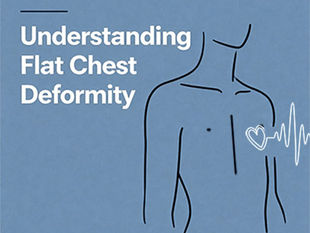
What are the differences between the Wang procedure and the Nuss procedure?
0
91

As a new generation of pectus excavatum surgery that subverts the tradition, the Wang procedure and the Nuss procedure show significant differences in many key aspects. These differences are not only reflected in the indications for surgery, but also profoundly affect the safety, effectiveness and subsequent recovery of the surgery.
Suitability for patient age: Nuss surgery, leveraging the lever principle to correct chest wall depression by flipping bars, demands a certain degree of rib cage rigidity and stability, rendering it generally unsuitable for children under 5 years old due to their soft and pliable bones. In contrast, Wang procedure uses steel wires to lift the sunken bony structure and secure it to a bar, making full use of the plasticity of young children's bones, so the surgery is not only suitable for young children, but also more effective. In fact, there have been successful cases showing that the Wang procedure can be safely applied to babies as young as 1 month old, greatly expanding the treatment spectrum.
Risk of heart injury: During the Nuss procedure, the bars not only need to be inserted into the chest and passed through the heart surface before passing out, but also need to be turned over in the chest to elevate the concave chest wall. This process poses a significant risk of cardiac injury, which is the primary concern of the procedure. Wang procedure, on the other hand, places the bar on the surface of the depressed bony structure, completely avoiding direct contact with the heart, thus eliminating this potential risk. It is worth mentioning that many patients who have experienced failed Nuss procedure or Ravitch procedure choose Wang procedure for their second surgery. This is because the first surgery can cause adhesions on the surface of their heart, making the process of inserting and flipping bars more difficult and dangerous, and Wang procedure is the safest option.
Impact on chest wall bone development: Nuss procedure secures both ends of the bars to ribs, potentially restricting natural rib growth and leading to recurrence of chest wall deformities post-puberty. Wang procedure adopts a more flexible fixation method, securing the midsection of the bar to the sternum while leaving the ends free, preserving normal rib development and minimizing the risk of postoperative deformity recurrence.
Surgical details: In addition to the core differences mentioned above, Wang procedure also demonstrates many advantages in surgical details. For example, it has fewer incisions (often a single incision of just 2cm) and does not require thoracoscopy assistance. These characteristics collectively reduce surgical trauma, alleviate patient pain, accelerate postoperative recovery, simplify the surgical process, and help control medical costs.
In conclusion, Wang procedure distinguishes itself from Nuss procedure in terms of patient age suitability, surgical safety, impact on chest wall bone development, bar removal timing, and surgical details . These distinctions underscore the innovative nature of Wang procedure and offer patients with pectus excavatum a more personalized, safer, and effective treatment option.






